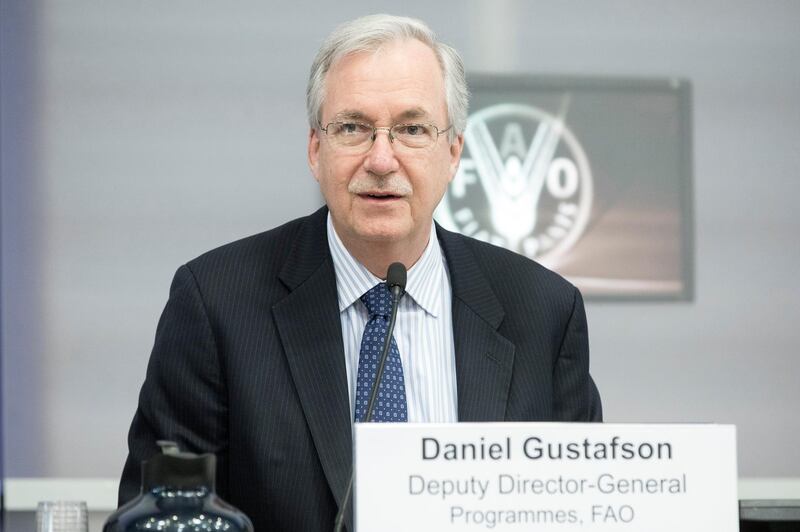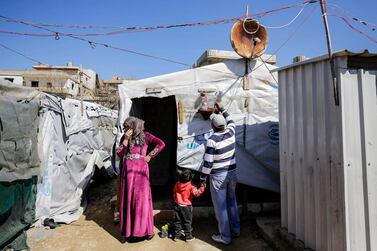The impact of years of conflict-related environmental damage in Syria will have long-term repercussions on the livelihoods of civilians that urgently need to be mitigated, the Food and Agriculture Organisation (FAO) warned on the side-lines of the Brussels III conference on Syria.
After eight years of war, Syria lies in tatters, its resources contaminated and its land riddled by trenches and unexploded ordinance. FAO Deputy Director-General Daniel Gustafson told The National much can and should be done to rebuild rural livelihoods, but the country's political situation means red lines must not be crossed.
“Much of the population is rural and we can get people producing again on a small scale without huge investments,” said Mr Gustafson. “That’s the bigger strategy.”
This strategy is also the only viable option for an organisation caught between donors’ wishes and the responsibility towards its member states. Syria is one of FAO’s 194 member nations and the embattled regime of President Bashar Al Assad is still the legitimate interlocutor within the international body.
FAO therefore works in close coordination with the Ministry of Agriculture, but is also bound by donors to avoid giving financial assistance to a government accused of war crimes against its own population.
“There are limitations from the donor community on how they want their money to be used and they are real clear,” Mr Gustafson said.
This makes long-term rehabilitation projects impossible to carry out and shifts the focus of the organisation on community-level projects.
“We are not going to do reconstruction, that’s not going to happen,” Mr Gustafson said. “There are red lines on what you can do and what you can’t do.”
Almost 42 per cent of the population in Syria is estimated to live in rural areas, according to the World Bank. FAO is prioritising helping the most vulnerable improve their access to food, nutrition and income through seed assistance and animal vaccination project.
Catering to the 10 million people who are estimated to be food insecure inside Syria will also require natural resource management and rehabilitation. “There is a lot of water infrastructure [reparation] and a lot of remediation of the land that is going to have to be done,” Mr Gustafson said.
Water resources and conflict-related pollution must be prioritised, according to FAO, which is preparing to attend the international Water Desalination Conference in Cairo in April, focusing on desalination researches, technologies, economies and sustainability in the Arab region.
Despite the political constraints, Mr Gustafson said that “at all points along the crisis there are things that you can do to help people [inside Syria].”
The EU will be making its pledges for humanitarian aid to the Syrian people on Thursday. As food insecurity levels are expected to remain high, strengthening agricultural production is essential to ensure availability and access to food.
FAO requires $120 million (Dh440.7ml) to assist 3.5 million people from January to December 2019.






